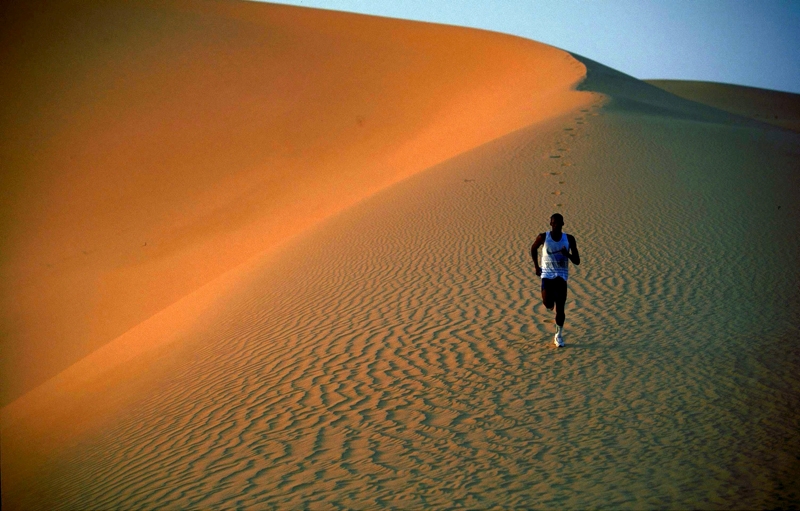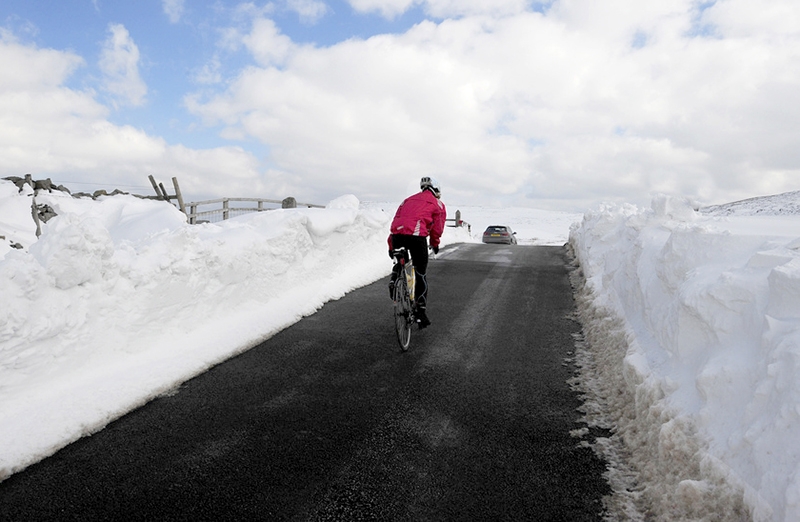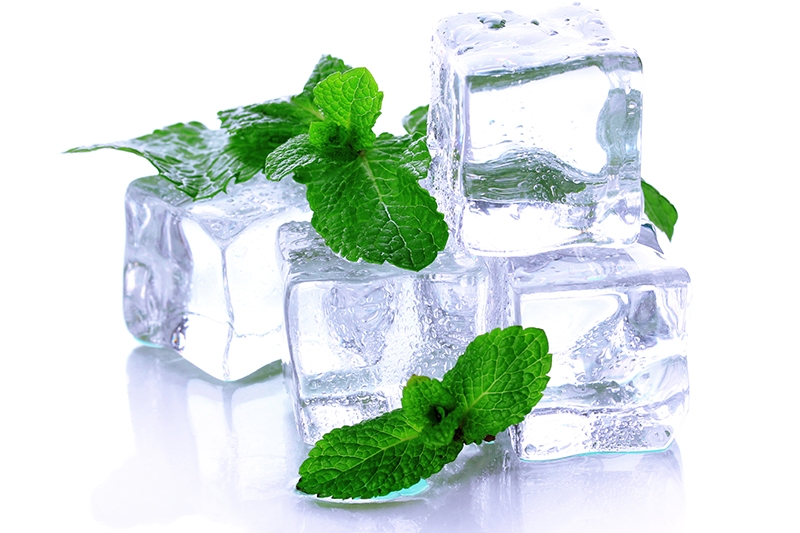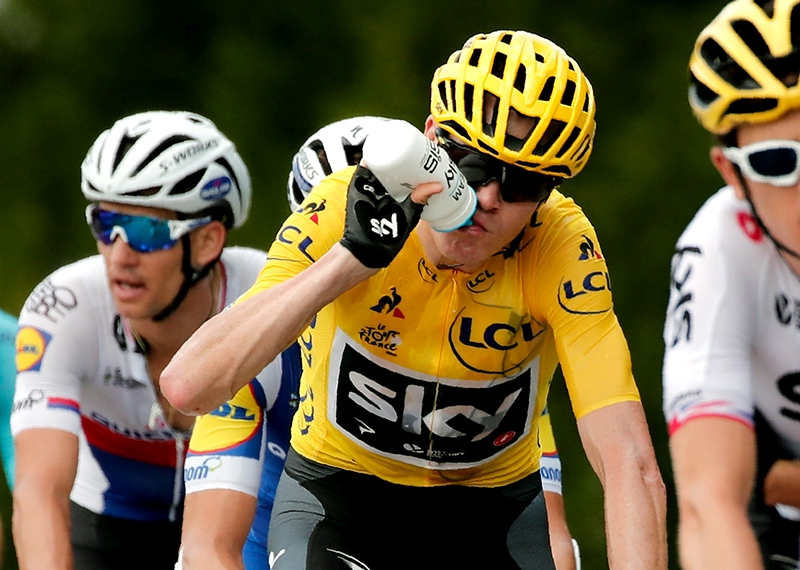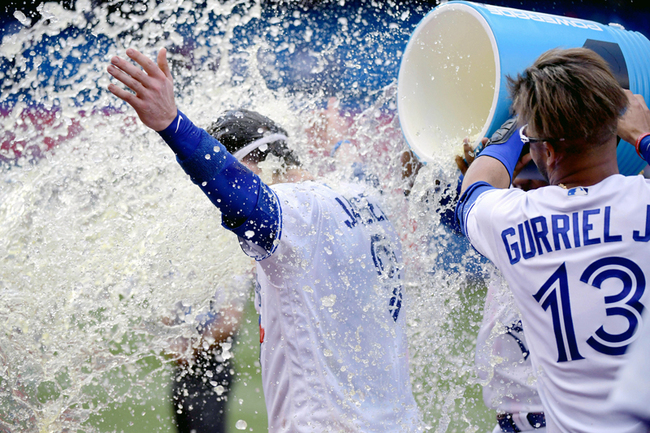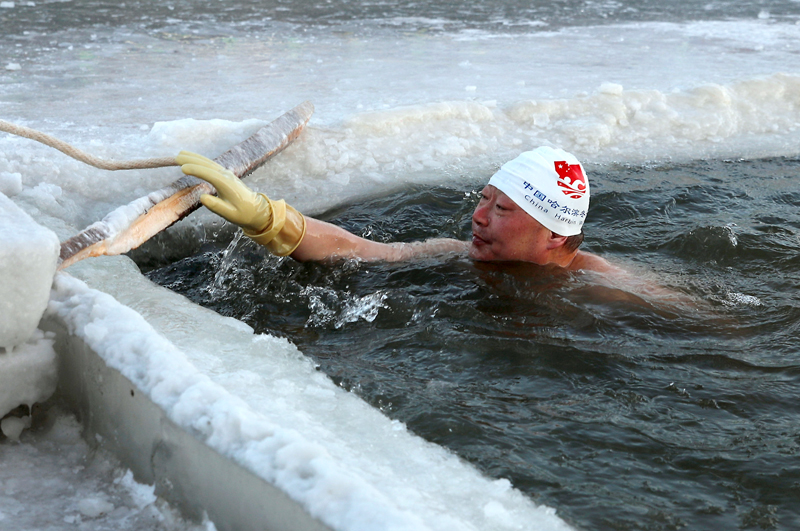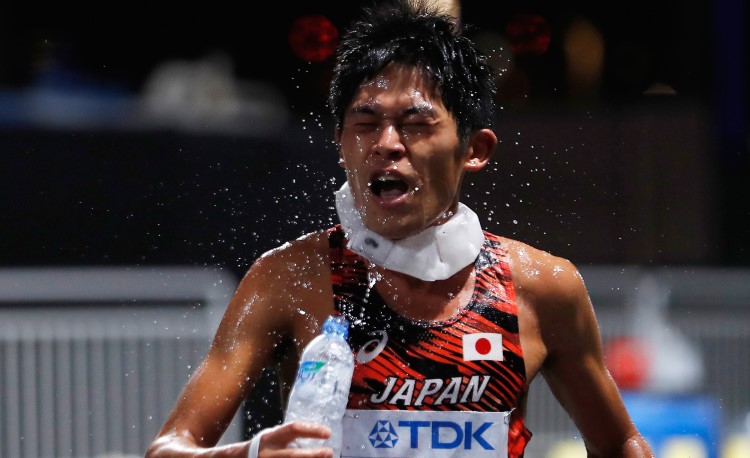You are viewing 1 of your 1 free articles. For unlimited access take a risk-free trial
Turn up the heat: training hot for all-year round performance

As spring approaches and warmer weather beckons, Rick Lovett looks at the science of training for hot-weather performance, and also explains why and how heat training can benefit your performance ALL year round
Mention ‘heat training’ to the average endurance athlete, and what they will probably think of is training in the heat in order to acclimate their bodies to the stresses of hot weather racing and training. And as we saw in another Sports Performance Bulletin article, if you want to perform well in heat, you need to train in heat.But that type of heat training involves acclimation—training your body to make the adaptations needed to perform well in the heat. What if you went through all of that discomfort only to wind up racing on a cool day? What if you take a vacation in sun-soaked Malta, Greece, or Italy, slogging through the heat and humidity in an effort to maintain your training, only to return home to vastly cooler conditions?
Psychologically, of course, such a shift would be wonderful. Train in the heat and then, blessed relief, you don’t have to contend with it on race day! But as we discussed previously, heat acclimatisation produces a host of physiological changes in the body (see figure 1). These make you better able to perform in heat - but do they ‘de-acclimatise’ you for ideal performance (ie make you worse) when the heat disappears?
Training in heat invariably requires you to slow your pace. Partly, that’s because of the risk of heatstroke, but it’s also because your blood is being forced to serve double duty, with some going to the skin for cooling, reducing the amount that can carry oxygen to the muscles. You might therefore expect this to mean that your muscles would gradually lose their ability to go fast once they get back to cool temperatures. After all, one of the basic principles of training is ‘specificity’, which says you should train as specifically as possible for the race you want to run. Training in heat to run fast in heat is an example of the principle of specificity in action. Training in heat before racing in cool temperatures is not.
Figure 1: Physiological changes in the body following heat training

DEFINITION - The words ‘acclimatisation’ and ‘acclimation’ are often tossed around as interchangeable, but they mean slightly different things. Acclimation is the process of getting used to the heat that nature serves up. Acclimatisation involves forcing the process artificially.
Heat equals altitude
The principle of specificity isn’t rocket science. Nor is it a straightjacket. The primary point of specificity is that if you want to be a great triathlete, alpine skiing will have limited value as supplemental training. Minute for minute, you’ll get more out of your training by practicing the sport you’re doing than you will by doing random workouts in other sports.But nobody’s training is TOTALLY specific to their preferred event. Someone training for a 5-minute 1500m run won’t do all of their running at 80-second laps (5:00 pace). They’ll do some at a faster pace, some at a slower pace, and some at a much slower pace, as they work to improve all of their body’s neuromuscular and energy systems from sprint to endurance. In other words, just because heat slows you down, training in it isn’t necessarily a bad thing, even taking into account the principle of specificity.
In fact, a growing body of research is suggesting that heat training may produce the same types of endurance benefits of altitude training. Moreover, these benefits can be had at a fraction of the cost of going to an altitude camp, especially if you live in a climate that regularly brings heat, whether we like it or not!
The first inkling this might be the case came from a study by researchers from the University of Oregon, published in 2010 in the Journal of Applied PhysiologyJ Appl Physiol; 109(4):1140-7 Oct. 2010; doi: 10.1152/japplphysiol.00495.2010.. A dozen experienced cyclists worked out for 100 minutes a day for ten days on stationary bicycles in a very hot room (40°C, 50% relative humidity). At the end of this training regime, their average maximum aerobic power measures (VO2max – a prime measure of endurance performance) under cool conditions had jumped by 5 percent compared to a control group who continued training in normal heat (see figure 2), and their time-trial performances in both hot and cool conditions had jumped by 6-8 percent.
FIGURE 2: VO2max gains in cool conditions after ten days of heat training

Intriguingly, ten days of 100-minute workouts are exactly what the heat-acclimation studies show is needed to produce full acclimationFed Proc 1963; 22: 704-8.. What the Oregon study appears to be showing is that the mere fact of acclimating to heat carries with it as a side effect, a huge jump in cool-temperature VO2max. In other words, heat training, could be a kind of poor man’s altitude training, where you can ditch the expensive altitude camps, and instead just stay home and embrace the heat (within reason—you don’t want to overdo it and get heatstroke). By doing that, you’ll wind up faster when the weather cools back down.
Nor is this the only such study. Two years later, a group of New Zealand scientists had elite rowers practice 90 minutes a day at 40°C for a mere five daysEur J Appl Physiol. 2012 May;112(5):1827-37. doi: 10.1007/s00421-011-2153-3.. Testing before and after showed that, compared to non-heat trained rowers, they had improved their 2000m performance times (which averaged 6:52.7 minutes) by an average of four seconds. That might not sound like a lot, but it’s an increase of about one percent…and rowing is a sport in which the resistance of water makes small improvements in speed disproportionately more difficult.
Bear in mind too that these were elite rowers who’d been working at a high level for a long time; a 1% improvement in speed is a big deal at this level, being the difference between 40mins:00secs and 39mins:36secs in the 10K, or 3hrs:00:00 and 2hrs:58:12 in the marathon. There was no training commitment other than the decision to tough out a few days of heat, and these rowers got that improvement with a mere five days of training. Nor were these athletes killing themselves with near-deadly heat workouts. They adjusted their efforts to make sure their core body temperatures never rose to dangerous levels.
However, not all the scientific findings are unanimous. A 2014 study by a team of Danish and Qatari researchers assigned 18 fit Danish cyclists (average VO2max 63.3mls/kg/min) to two groupsScand J Med Sci Sports, 25: 269–276. doi:10.1111/sms.12409.:
- A group that trained for two weeks in the cool temperatures of Denmark.
- A group that went to a twoweek heat camp in Doha, Qatar, where they trained in hot, dry conditions (average air temperature 34.1°C; relative humidity 18%).
The scientists behind the Oregon study countered that the failure to show positive results was because heat training needs to be of “sufficient stimulus and duration” to be effective. The cycling in Qatar may have been an insufficient stimulus because:
- The subjects were cycling outdoors in desert conditions, where the low humidity turned the 34.1C ambient temperature into the heat equivalent of only 27.7C at higher humidities.
- The cyclists would have also experienced extra cooling effects when cycling outdoors (plenty of dry air passing over the skin), which reduced the heat stress even further.
Why does heat work?
Why heat training works this way is a mystery that scientists are still unraveling. One possibility is that it mimics the type of stresses being put on the muscles during altitude training. When you run at altitude, the body’s main problem is that there’s not enough oxygen. It makes a variety of adaptations to increase its ability to deliver oxygen to the tissues that need it, but the bottom line is that the muscles are being at least partly starved for oxygen.Other research is suggesting that this might also have something to do with the effects of heat on blood flow in your arteries. This line of research began with a 2015 study suggesting that time spent in a sauna can drastically reduce your risk of a fatal heart attack. The study tracked 2315 middle-aged Finnish men for an average of 21 years, and found that those who took saunas four or more times a week had only about a 40% the risk of dying of heart disease than those who took one or fewer saunas per weekJAMA Intern Med. 2015 Apr;175(4):542-8. doi: 10.1001/jamainternmed.2014.8187.. Clearly, something about the heat was good for their cardiovascular systems!
Following this, the scientific team at the University of Oregon took their research a step further. They put young, sedentary subjects into hot tubs 4-5 times a week for eight weeks, then assessed the impact on their cardiovascular health. They find similar improvements to those known to be produced by exercise, but without the exerciseJ Physiol. 2016 Sep 15;594(18):5329-42. doi: 10.1113/JP272453..
Subsequent work suggests that the way that both exercise and heat may work is by increasing blood flow in ways that stretch blood vessels and force them to adapt by a so-called ‘flow-mediated dilation’ effect (see figure 3)Physiol Rev 2017. 97: 495–528, February 1; doi:10.1152/physrev.00014.2016. For the sedentary, this effect helps stave off fatal heart attacks. For athletes, this makes them fitter, and faster. It stands to reason therefore that combining exercise with heat may compound these beneficial effects.
If all of this is a bit confusing, welcome to the cutting edge of exercise physiology. The good point is that, as the Oregon team has noted, heat training is not only inexpensive, but as long as you’re careful not to overdo it and land yourself in hospital, there’s no real downside. The worst that might happen is that it doesn’t work. All that you really need to do is acclimate for heat as described in last month’s article, and then try a race in cool weather.
Although the science of heat training is still very young, we can still make some common sense recommendations, especially because the simplicity of heat training is that you can do it from home. When you want the benefits of heat, train at midday. When you want to work your muscles for speed, train early, before the heat rolls in. By judiciously combining the two, you can get the best of both worlds, without ever leaving the comfort of home – unlike altitude training, which usually involves expensive trips away!
FIGURE 3: Flow-mediated dilation effect

Rick Lovett: a case in point
I myself have inadvertently used a heat-training approach for much of my master’s running career. Each year in my late 40s and early 50s, I targeted a two-peak racing cycle. The first peak was in the spring. My second was in the early fall. Between them, when my spring peak started to fade, I backed off from racing, and waited for October, when the single most important race on my annual cycle was a hotly-contested 5-miler early in the month, which brought out all the best age-groupers in my city.Other than a couple of years when injuries set me back, I never failed to exceed expectations at that October race. For years, I was baffled by how I was able to hit that early October peak so reliably, year after year. It’s only now, that I believe that the answer may have been heat. I have never been a morning runner. I’m a journalist by profession, and most of us are happier with midnights than dawns. What this means is that I’ve never run in the mornings unless I had to.

I’m also highly sociable, which means I’ll show up for after-work workouts no matter what the conditions. I remember chasing runners half my age on 6-mile tempo runs at 28°, and even managing to run at temperatures as high as 41°. Whatever nature served up, I’d be out there. One result was that I became superbly heat acclimated. But I realise now that another is when the temperatures dropped, I peaked - year after year after year. I’m convinced that the magic wasn’t in the precise workouts I was doing prior to the October race, but in the simple fact that day after day after day, I was doing them in heat.
Dump the water bottle
A final word on using heat training; if you want to maximally boost VO2max, you might need to consider some voluntary dehydration. Coach after coach will tell you to remain hydrated in heat. “Drink, drink, drink,” is the standard mantra. And in race conditions, this is exactly what you want to do.But the recent research suggests that moderate dehydration may help boost the heat-training effect by forcing your body to adapt more efficiently. One of the reasons the Qatar study may have failed to produce results was that the cyclists were allowed to drink whatever they wanted. The New Zealand study allowed the rowers to consume only 100mls of water in an hour and a half— barely enough to wet your whistle. And the Oregon study was conducted under heat and humidity conditions in which nobody could stay hydrated, regardless of what they drank.
The bottom line is really simple. While the heat lasts, embrace it, and do what you can to get heat acclimated. Meanwhile, maintain muscle fitness by doing at least one hard workout a week under cooler temperatures. In these hard workouts, you should focus on speed, more than aerobic endurance, trusting the heat training to build the latter. Then when the temperatures drop, race and see what happens. In other words, train like you’re going to do a hot-weather race and then run a cool-weather one. The worst that’s likely to happen is that you’re delighted with the temperature change. And you might just run the race of your life!
Newsletter Sign Up
Testimonials
Dr. Alexandra Fandetti-Robin, Back & Body Chiropractic
Elspeth Cowell MSCh DpodM SRCh HCPC reg
William Hunter, Nuffield Health
Newsletter Sign Up
Coaches Testimonials
Dr. Alexandra Fandetti-Robin, Back & Body Chiropractic
Elspeth Cowell MSCh DpodM SRCh HCPC reg
William Hunter, Nuffield Health
Keep up with latest sports science research and apply it to maximize performance
Today you have the chance to join a group of athletes, and sports coaches/trainers who all have something special in common...
They use the latest research to improve performance for themselves and their clients - both athletes and sports teams - with help from global specialists in the fields of sports science, sports medicine and sports psychology.
They do this by reading Sports Performance Bulletin, an easy-to-digest but serious-minded journal dedicated to high performance sports. SPB offers a wealth of information and insight into the latest research, in an easily-accessible and understood format, along with a wealth of practical recommendations.
*includes 3 coaching manuals
Get Inspired
All the latest techniques and approaches
Sports Performance Bulletin helps dedicated endurance athletes improve their performance. Sense-checking the latest sports science research, and sourcing evidence and case studies to support findings, Sports Performance Bulletin turns proven insights into easily digestible practical advice. Supporting athletes, coaches and professionals who wish to ensure their guidance and programmes are kept right up to date and based on credible science.
